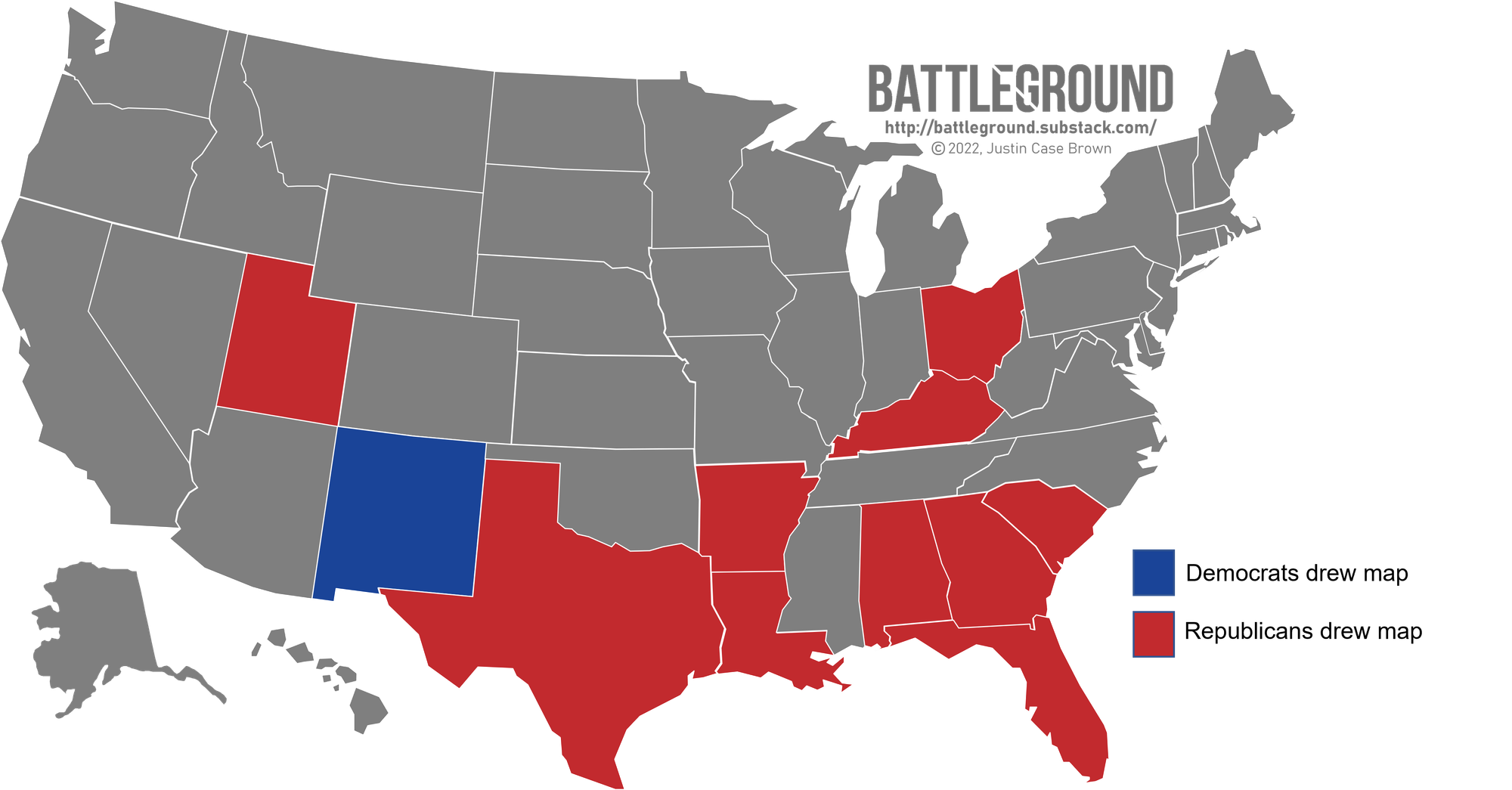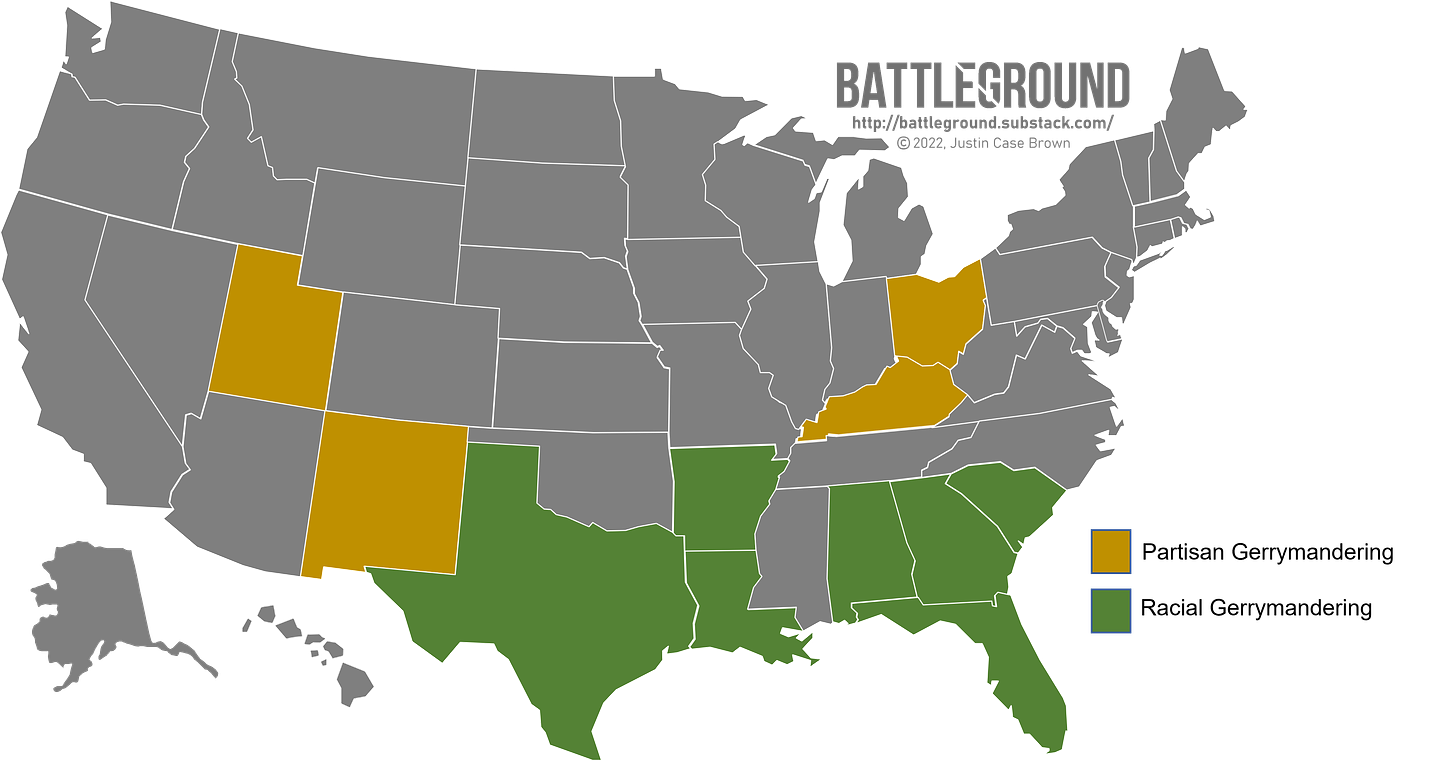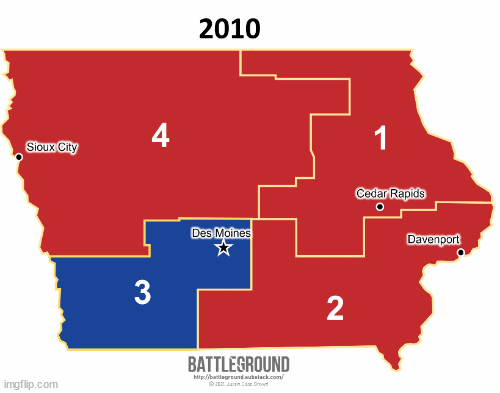Several States Used Illegal Voting Maps in the 2022 Elections
Voters in eleven states voted using congressional maps that may be struck down in the future for partisan or racial gerrymandering.

Gerrymandering is alive and well in the United States. After the dust settled on our nation’s once-a-decade redistricting process, congressional district maps from 11 states face ongoing lawsuits for either partisan or racial gerrymandering. Below is a complete guide to the states where gerrymandering warped our electoral outcomes in the 2022 elections.

For a refresher, there are two types of gerrymanders: political gerrymanders and racial gerrymanders. Political gerrymanders are maps that unfairly favor a specific political party by drawing lines in such a way that a party can capture more seats than they receive votes for. Racial gerrymanders are maps that unfairly disadvantage a specific racial group by drawing lines that prevent minorities from electing their own members to Congress. It’s important to denote the type of gerrymander as it determines how the case is adjudicated. In Gill V. Whitford (2018), the US Supreme Court ruled that partisan gerrymanders are not federally barred via the Constitution. This forces state courts to hear these cases as they’re outside of the jurisdiction of federal courts. Racial gerrymandering cases however are unconstitutional via the 14th Amendment and are all sent to federal courts (who then typically refer them to SCOTUS).
Republicans Map Out Their Racism
While both parties have engaged in partisan gerrymandering, only Republicans have made the mistake of drawing racial gerrymanders. What’s even more frustrating is that the seven states with outstanding racial gerrymandering lawsuits previously had federal legal protections to prevent such actions. All seven states would have been required to redraw their maps months ago had SCOTUS not struck down a key part of the Voting Rights Act back in 2013.
Why Did We Use These Maps?
SCOTUS put a hold on a federal court case that demanded Alabama redraw its congressional district maps for racial gerrymandering. While this decision didn’t explicitly validate the maps in the eyes of the court, it did allow the map to stand for the 2022 elections. (Even though SCOTUS later ruled Alabama’s map as an unconstitutional gerrymander, representatives who were elected using the map were allowed to hold their seats.) In defense of the stay, the majority cited the Purcell principle, an idea that courts shouldn’t make decisions that change election rules during the period just prior to an election.
“In short, the Purcell principle requires that we stay the District Court’s injunction with respect to the 2022 elections. The Court has recognized that ‘practical considerations sometimes require courts to allow elections to proceed despite pending legal challenges.’ So it is here. If the District Court’s judgment is eventually affirmed after appellate review, the injunction can take effect for congressional elections that occur after 2022.”
-Justice Brett Kavanaugh in his written opinion
SCOTUS has since cited the same principle in its decision to reverse a similar lower court ruling in Louisiana which dimmed the prospects of other federal racial gerrymandering cases.
In layman’s terms: because SCOTUS couldn’t (or wouldn’t) act quickly enough, we had to suck it up and use the maps we’ve got, no matter how unfair they may be or who they may disenfranchise. (HINT: This is what systemic racism looks like in practice.)
So What Can We Do?
It may sound counterintuitive but… VOTE. Even if you’re voting under less-than-ideal circumstances like in the states above, voting is better than doing nothing. Vote not just on federal legislators but also the state legislators that were responsible for drawing your state’s congressional district lines. If you feel disenfranchised, vote them out! (Conversely, support people who support fair and open elections!)
After you’re done voting, educate yourself on existing gerrymandering cases. There’s a lot of hand-wringing about politicians who are a “threat to democracy” to the point that it’s slowly becoming a talking point that voters ignore. BE SPECIFIC! Tell your friends and family EXACTLY HOW our democracy is being attacked. Below you will find links to all of my previous posts related to these gerrymandering cases. Hopefully this batch of content can help you spread the word!




